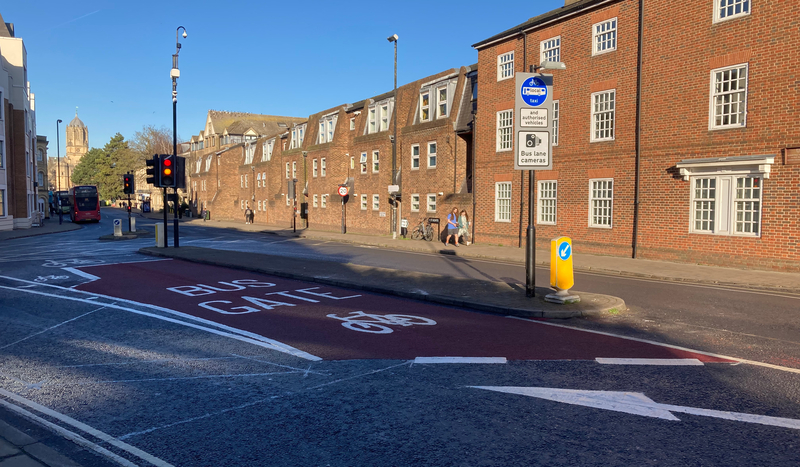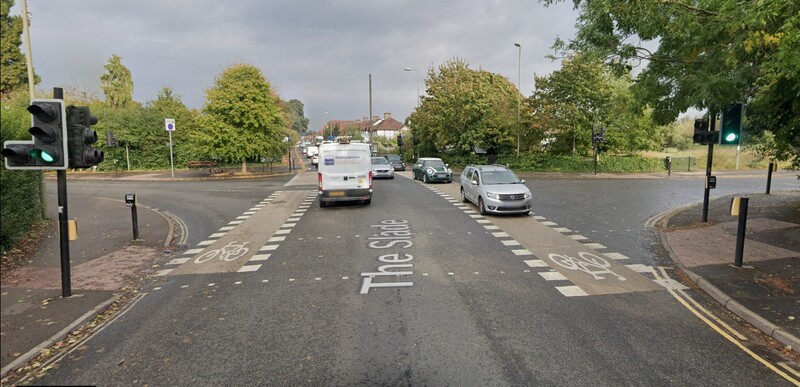Oxfordshire is still colouring bus lanes - as this newly surfaced example from just north of Folly Bridge shows - while refusing to paint cycle lanes. This prioritises helping a few inattentive or blind drivers avoid fines over safety for people cycling.
There is good evidence that colouring cycle lanes and tracks helps make the allocation of space more "legible" - easier and faster to understand - reducing conflict between cycles and motor traffic and also between people walking and cycling. For example, one recent Norwegian study: "motorists kept a greater distance from the cycle lane... cyclists chose to cycle in the cycle lane [rather than] on the pavement... visibility, perceived safety and ease of visualisation improved more in the recoated streets than in control streets". The Netherlands has a consistent national colouring scheme for cycling infrastructure, used pretty much universally in urban areas and at junctions. Denmark has colouring at junctions and other conflict points.
Colouring seems particularly important with the "Quickways"-style treatments being used in much of Oxford, where the cycle lanes are used to visually narrow the carriageway and slow motor traffic, as seen most prominently on the Magdalen Bridge cycle lanes. But it would also be useful with separated cycle tracks (as in the Woodstock Rd plans) especially where they cross side entries. (Note the orange cycle tracks in these — highways plans always seem to have cycle lanes and tracks in very bright colours, making them appear much more distinct than they end up being.)
So the county should commit to colouring all cycle lanes and tracks. Cost is a problem - I believe colouring cycle lanes is on the order of £20k/km - but this can be done as funding is available, as part of larger projects. To the extent that funding allows for choice, the routes with the highest cycling volumes should be prioritised, along with conflict areas at junctions or crossing side-entries. The county should certainly not be colouring bus lanes instead!
The choice of colour is less important. Something relatively subdued - not a London bright blue - may work better in a city with considerable heritage streetscapes, though the buff used in a few places in Oxford is perhaps too subdued (and too similar to concrete pavements or carriageways). My preference would be the red currently used for bus lanes, which could be repurposed - there is little risk of buses driving into cycle lanes and people cycling can use bus lanes. And of course asphalt would be better than paint, as it wouldn't wear or fade or require repainting: here's the red asphalt used in Sheffield.)
We don't need to reinvent the wheel. Here's "a decision-makers' and designers' tool for a rational planning, construction, maintenance and management of colored cycling infrastructures, able to favor a cultural and technical interchange".
Note: this is also a twitter thread.


